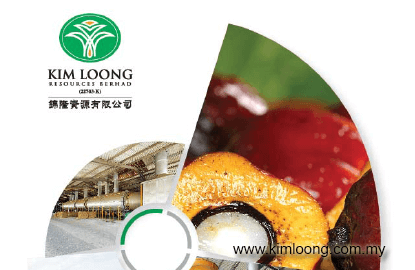

This article first appeared in The Edge Financial Daily, on June 10, 2016.
Kim Loong Resources Bhd
(June 9, RM3.39)
Recommend a trading buy with a fair value (FV) of RM3.66: We recommend a “trading buy” on Kim Loong Resources Bhd with a FV of RM3.66 based on a target price-earnings ratio (PER) of 14 times. The valuations are undemanding compared to its small-cap plantation peers’ average forward PER of 20.6 times, due to its earnings consistency driven by above-average yield per hectare (ha), long-term fresh fruit bunch (FFB) growth supported by its maturing Sarawak acreage, strong balance sheet with an estimated financial year 2017 (FY17) net cash position of 60.5 sen with an above-average dividend yield of 4.6%, and an expected FY17 earnings recovery of 10% on rising crude palm oil (CPO) prices.
In FY16, Kim Loong delivered FFB yield per hectare of 21.7 tonnes a year, 24% higher than small-cap planters’ 2015 average of 17.5 tonnes per year, and 17% higher than the 2015 Malaysian average of 18.5 tonnes a year. We believe this justifies its higher enterprise value per mature hectare of RM68,200 per hectare or 34% above small-cap planters’ average of RM50,900 per hectare.
We believe Kim Loong’s consistent yield of above 21 tonnes per hectare and oil extraction rate of above 21% in the last five years contributed to its long-term earnings consistency, as over the last 10 years, Kim Loong had seen positive earnings growth for seven out of 10 years with the highest 10-year compound annual growth rate of 21% (average: 7%).
Management mentioned that it plans to expand its Sarawak operations via its 70:30 joint venture with state government agency Pelita Holdings Sdn Bhd. We understand that the company has about 2,000ha of plantable area in Sarawak out of its current 10,500ha estates, and is also open to expanding its land bank in Sarawak, with preference for greenfield areas.
Management is also targeting a mill licence in Sarawak within the next one to two years to support its young maturing estates, which have an average age profile of six years. We are positive on the continued development in Sarawak as the young acreage should contribute to positive FFB growth over the long term.
Kim Loong is in a solid net cash position with an estimated FY17 net cash per share of 60.5 sen, versus its peers’ average net cash position of 15.4 sen. While we estimate that the new mill’s capital expenditure will be incurred at RM70 million over the two years ending FY19, we still expect strong FY17 and FY18 free cash flows of RM82 million and RM49 million respectively.
Hence, we expect Kim Loong to easily maintain a 60% payout ratio for FY17 and FY18 dividends per share of 15.7 sen and 16.1 sen respectively, which translate into above-average dividend yields of 4.6% and 4.8% (small-cap planters’ average is 2%).
As Kim Loong’s Sabah estates are impacted by the mid-2015 droughts, management expects flat yields in FY17 and normalisation by FY18. We estimate FY17 and FY18 FFB growth of 2% to 9%, driven by maturing areas in Sarawak and yield recovery in 2018. This is in line with our FY16 and FY17 industry average growth forecasts of 1% to 10%.
Despite flattish production, we believe its FY17 earnings should improve by 10% to RM81 million as we expect CPO prices to increase 9% to average at RM2,400 per tonne in 2016. This is in line with its small-cap peers’ average FY16 estimate earnings growth of 9%. In the short term, we think the upcoming first quarter of FY17 should see flat-to-better results, as CPO price improvement (quarter-on-quarter [q-o-q]: +17%, year-on-year [y-o-y]: +15% to RM2,540 per tonne) should offset weaker FFB production (q-o-q: -19%, y-o-y: -18% to 52,500 tonnes).
We recommend a “trading buy” on Kim Loong with an FV of RM3.66, based on a forward PER of 14 times applied to FY17 EPS of 26.1 sen. Our forward PER of 14 times implies a +1 standard deviation valuation basis, which we believe is fair, given Kim Loong’s long-term FFB growth prospects, solid balance sheet and consistent growth exceeding its small-cap peers.
We also note that our applied forward PER at 14 times represents a 32% discount to small-cap planters’ average forward PER of 20.6 times, demonstrating its undemanding current valuations. — Kenanga Research, June 9